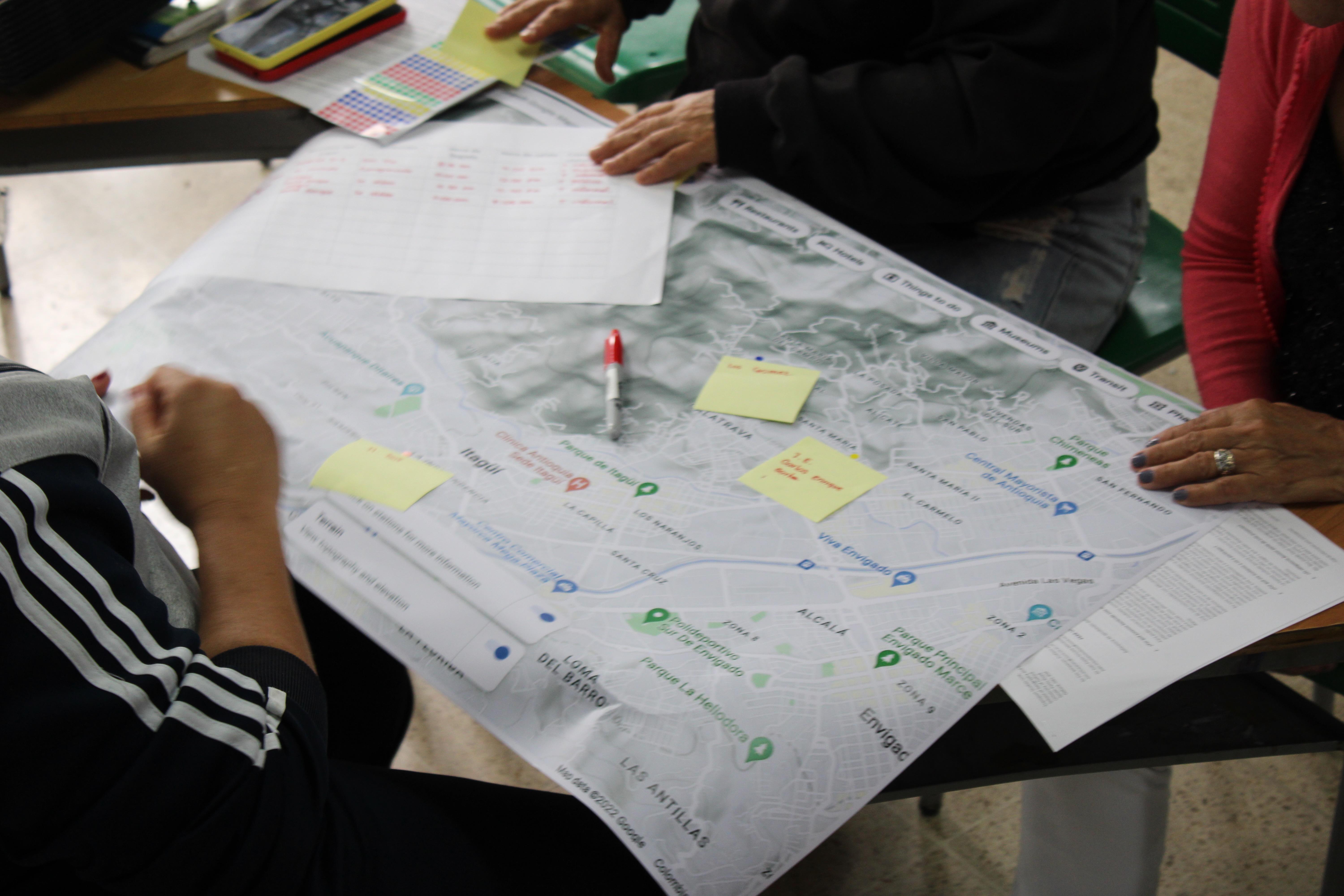Co-MapEA: Co-designing Maps for Equitable Access
Overview
Public transport and walking play a crucial role in building sustainable cities and communities. An accessible public transport network enables millions of people to access a variety of urban goods and services such as employment opportunities, healthcare, education, and food, among others. However, learning how to efficiently read and use these systems is not always an easy task and can be particularly challenging for recently arrived migrants who will have very few reference points and have not developed relationships with host cities. In most settings, navigation tools such as maps and signalling are designed with the “average user” in mind, ignoring the gendered, cultural, and racialised dynamics of urban mobility. Women are disproportionately responsible for caregiving which involves different travel patterns than work-related trips, tend to report feeling less safe in public spaces, and typically make more and shorter walking trips than men. The design of public transport maps and signalling for urban mobility rarely take these circumstances into account, omitting information that certain people may find essential, thus reducing their accessibility to urban opportunities, augmenting gender and socioeconomic inequalities.
Since 2000, Bogota, Colombia, has successfully transformed its public transport system, becoming a worldwide example of low-cost, environmentally sustainable mobility options for megacities. This shift has been led by TRANSMILENIO S.A. (TMSA), the managing body of the bus rapid transit system, feeder buses, zonal public transport, and cable cars, with support and oversight from the city’s Secretariat of Mobility (SDM). However, it has become increasingly obvious that many users lack a sense of belonging in the system, evidenced by constant infrastructure destruction and fare evasion. The SDM has also placed emphasis on active travel (walking, cycling) in its policy efforts.
In recent years Bogota has received 20% of all Venezuelan migrants to Colombia, and over 400,000 now live in the city. While existing digital maps and apps may be useful to some, more than 30% of Latin Americans lack regular internet access, rendering printed maps and street signalling essential.
Recognising the specific lived experiences of low-income recently arrived women migrants such as getting used to a new city, facing xenophobia and gendered-based violence, and having to still perform daily essential trips for care and work, our consortium will co-create navigation tools that are available to all and are easy to interpret, moving away from the traditional God’s eye perspective offered by transport specialists. We are particularly invested in co-creating such tools for both public transport and walking which make up most of the trips low-income recent migrant women take.
Aims and objectives
We aim to co-design, test, and distribute navigation tools such as maps and street signalling for walking and public transport with a group of low-income recently arrived migrant women.
Our project-specific objectives are:
- Understand the difficulties the women in our group face when reading current public transport maps and navigation tools for walking;
- Co-design alternative maps and street signalling that address these difficulties making them more intuitive and useful;
- Evaluate the effectiveness of the new navigation tools with a wider group of potential users.
The co-design of these tools will constitute a paradigmatic change in how sustainable and inclusive cities can be read by traditionally excluded populations allowing them to feel part of new spaces they co-inhabit and offer new significances to the city.
Deliverables, outcomes and impact
By the end of our project, we will deliver redesigned maps and navigation tools that will help migrants and other people navigate the city with more ease. We will offer mobility authorities a summary, results, and lessons learnt from the project so that it can be replicated with other groups and forthcoming mobility projects, and at least two academic papers will be submitted for peer review.
In brief
Duration
April 2025 – March 2026
Funder
ESRC Impact Acceleration Account at Oxford
Partners
Esteban Devis-Amaya (Oxford Brookes University)
TRANSMILENIO S.A.
Secretaría Distrital de Movilidad de Bogotá
Principal Investigators
Dr Juan Pablo Orjuela and Dr Valentina Montoya
Contact



